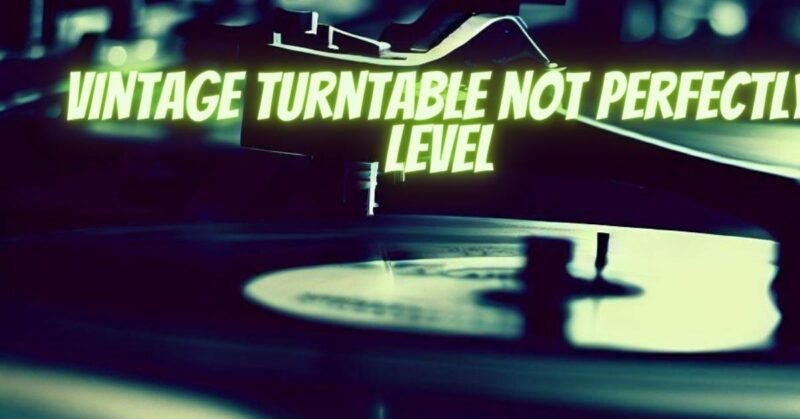Vintage turntables hold a special place in the hearts of audiophiles and music enthusiasts. These classic audio devices often carry a unique charm and character, delivering a nostalgic audio experience that modern technology can’t quite replicate. However, over the years, vintage turntables may lose their perfect leveling due to wear, age, or improper storage. In this article, we’ll explore the significance of having a level vintage turntable, the potential challenges it presents, and practical steps to address and enjoy your cherished vinyl records.
Why Leveling a Vintage Turntable Matters
- Optimal Playback: A level turntable is essential for achieving the best sound quality. Proper leveling ensures that the stylus accurately follows the groove, resulting in clear and distortion-free playback.
- Stylus and Record Preservation: An uneven turntable can cause uneven tracking, which may accelerate stylus wear and potentially damage your vintage vinyl records. Achieving the correct leveling helps preserve both the stylus and the records.
- Anti-Skate and Cartridge Alignment: Many vintage turntables feature anti-skate mechanisms and cartridge alignment settings. These adjustments rely on a level surface to function correctly. An unlevel turntable can render these adjustments ineffective.
- Vibration and Resonance Control: Stability is vital for preventing vibrations and resonance that can degrade sound quality. A level turntable minimizes the risk of unwanted vibrations that can introduce noise and affect playback.
Challenges with Imperfectly Level Vintage Turntables
- Skipped Grooves: An uneven turntable can lead to skipped grooves, causing the stylus to jump and skip sections of the music. This disrupts the listening experience and can harm both the stylus and the record.
- Excessive Wear: Uneven tracking can result in uneven stylus wear, which can prematurely damage both the stylus and the vinyl. This is particularly problematic for valuable and irreplaceable vintage records.
- Sound Distortion: An uneven turntable can introduce sound distortion, affecting the audio quality. Distorted playback can be frustrating and diminish the enjoyment of vintage vinyl records.
Practical Steps to Address an Imperfectly Level Vintage Turntable
- Assess the Turntable: Begin by thoroughly assessing your vintage turntable. Check for any visible damage, worn components, or issues that may be affecting its leveling.
- Stable Base: Ensure the turntable is placed on a stable and level surface. You may need to use a level tool to confirm the surface’s flatness.
- Adjust Feet: Most vintage turntables have adjustable feet that can be used to fine-tune their leveling. Carefully adjust these feet until the turntable’s platter is level.
- Use a Turntable Mat: Placing a quality turntable mat under your records can help absorb minor surface imperfections and ensure smoother playback.
- Balance the Tonearm: Ensure that the tonearm is correctly balanced and that the stylus is tracking at the correct pressure. Consult your turntable’s manual for guidance on tonearm balancing.
- Regular Maintenance: Periodically check and maintain your vintage turntable’s leveling to ensure it remains flat. Over time, vibrations or adjustments may affect the balance.
Vintage turntables hold a special place in the world of audio, offering a unique and nostalgic listening experience. Ensuring that your vintage turntable is correctly leveled is crucial for preserving both the stylus and your cherished vinyl records, as well as for achieving optimal playback quality. By carefully assessing and addressing any leveling issues, you can continue to enjoy your vintage vinyl collection to the fullest, relishing the warm and timeless sound that these classic audio devices provide.


